Owning a dog is one of the most rewarding experiences in life. However, the key to a successful and happy relationship with your furry friend is proper dog training. Training your dog is a process that will take time, patience, and understanding.
But with the right tips and techniques, you can be well on your way to creating a well-behaved pup that will make your life easier and more enjoyable.
In this blog post, we’ll share basic training tips that dog owners should know.
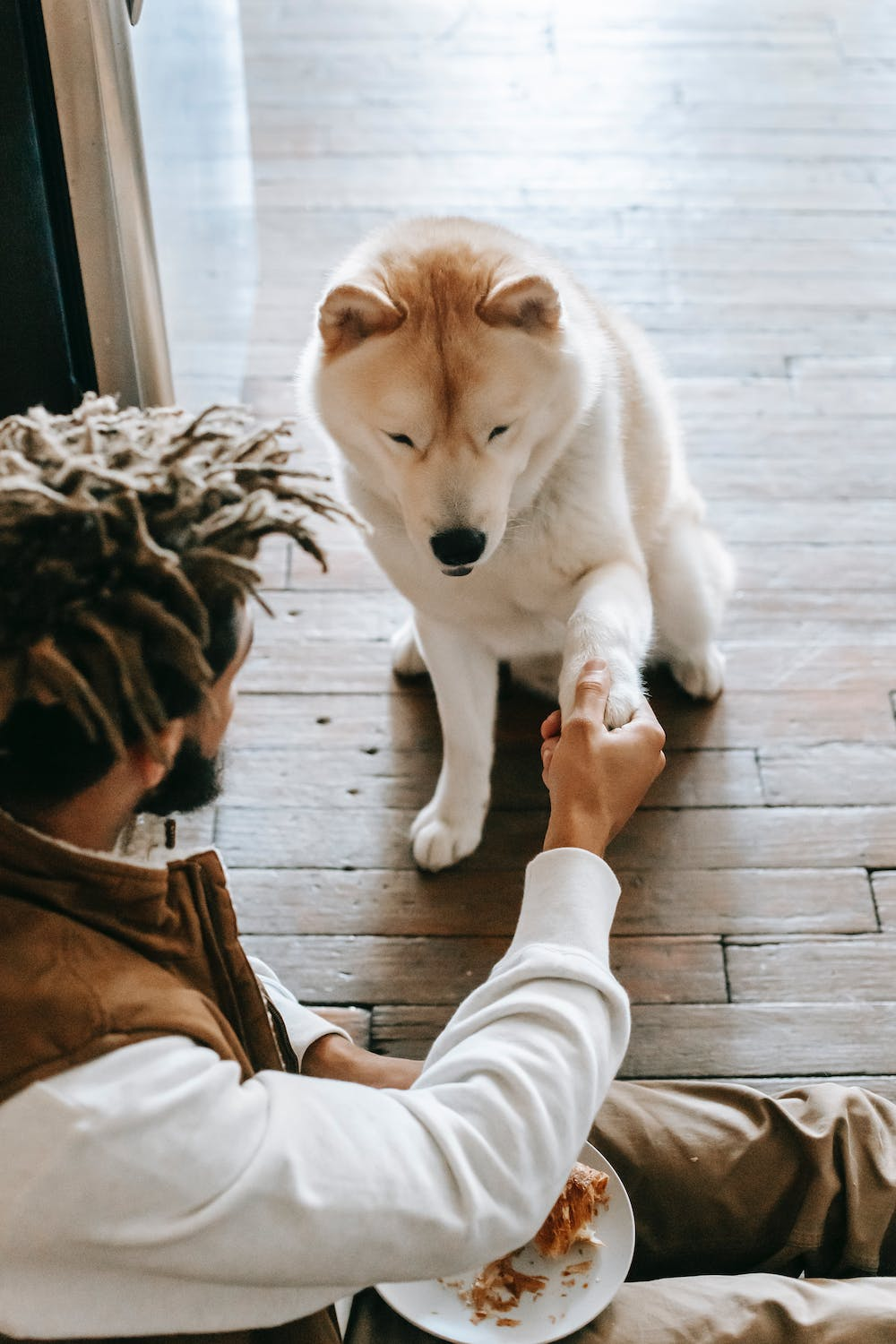
Start with Basic Obedience Training
The foundation of any good training program is basic obedience. This includes teaching your dog basic commands, like to sit, stay, come, and lay down.
These basic commands are not only practical but also provide a way for you to communicate with your dog. Once your dog has mastered these skills, you can move on to more advanced training sessions.
Use Positive Reinforcement Training
Positive reinforcement is one of the most effective dog training techniques. This means rewarding your dog with treats, verbal praise, and affection for good behavior.
Punishing your dog for bad behavior is not only ineffective, but it can also cause your dog to become fearful or aggressive. When your dog does something right, be sure to reward them immediately.
Consistency is Key
Dogs thrive on routine and consistency. To be successful in training your dog, you need to be consistent in your commands and expectations.
This means everyone in your household should know the same commands and be consistent in their approach. Inconsistency can lead to confusion, which can set back your training progress.
Exercise and Socialization
Training your dog is not just about obedience. It’s also important to give your dog plenty of exercise and socialization opportunities. Regular exercise helps to burn off excess energy and prevent destructive behavior.
Socialization helps your dog learn how to interact with other dogs and people. This will help your dog become more confident and well-behaved in various situations.
Use Training Treats
Dog training can be a rewarding experience for both pet and owner, but let’s face it, sometimes our furry friends need a little extra motivation to learn those new tricks. That’s where training treats come in handy!
Not only do they provide a delicious incentive for your dog to pay attention and follow commands, but they can also strengthen the bond between you and your pup. But it’s important to remember that not all treats are created equal.
Look for options that are healthy and low in calories, so you can reward your pooch without worrying about their waistline. So the next time you’re working on obedience or trying to break a bad habit, reach for those tasty training treats and watch your furry friend focus and succeed!
Start Training Early
Puppies are like sponges, absorbing everything around them in their early stages of life. This is why starting dog training early is crucial to creating a well-behaved and obedient companion.
Whether it’s teaching basic commands like “sit” and “stay,” or more complex skills like agility training, introducing your pup to a structured routine early on can greatly benefit their overall development. Not only will they learn important skills, but they’ll also become more comfortable with different environments and social situations.
So if you’re thinking about adding a furry friend to your family, remember that investing time in their training from a young age will pay off in the long run.
Consider Crate Training
Dogs can be one of life’s greatest joys, but if they’re not properly trained, they can become quite the handful.
Crate training your dog is a great way to provide structure and boundaries for your furry friend. It may seem like a daunting task, but with patience and consistency, it can be a positive experience for both you and your pet.
The key is to make the crate a comfortable and secure space for your dog to retreat to, rather than a punishment. With a little effort, your dog can learn to love their crate and you can enjoy the peace of mind that comes with knowing they’re safe and happy.
Consider Clicker Training
As a dog owner, you’re constantly exploring new training methods for your furry friend. Clicker training has gained popularity in recent times, and for good reason. This positive reinforcement technique involves a small handheld device that makes a clicking sound when pressed.
This sound serves as a marker for your pet, indicating that they have done something right. Clicker training helps to build a strong rapport between you and your dog, as you work together towards achieving desired results.
The process is simple, easy to implement, and can be used to teach a variety of commands and behaviours. Consider clicker training your dog and watch as your bond grows stronger and your dog becomes a well-trained companion.
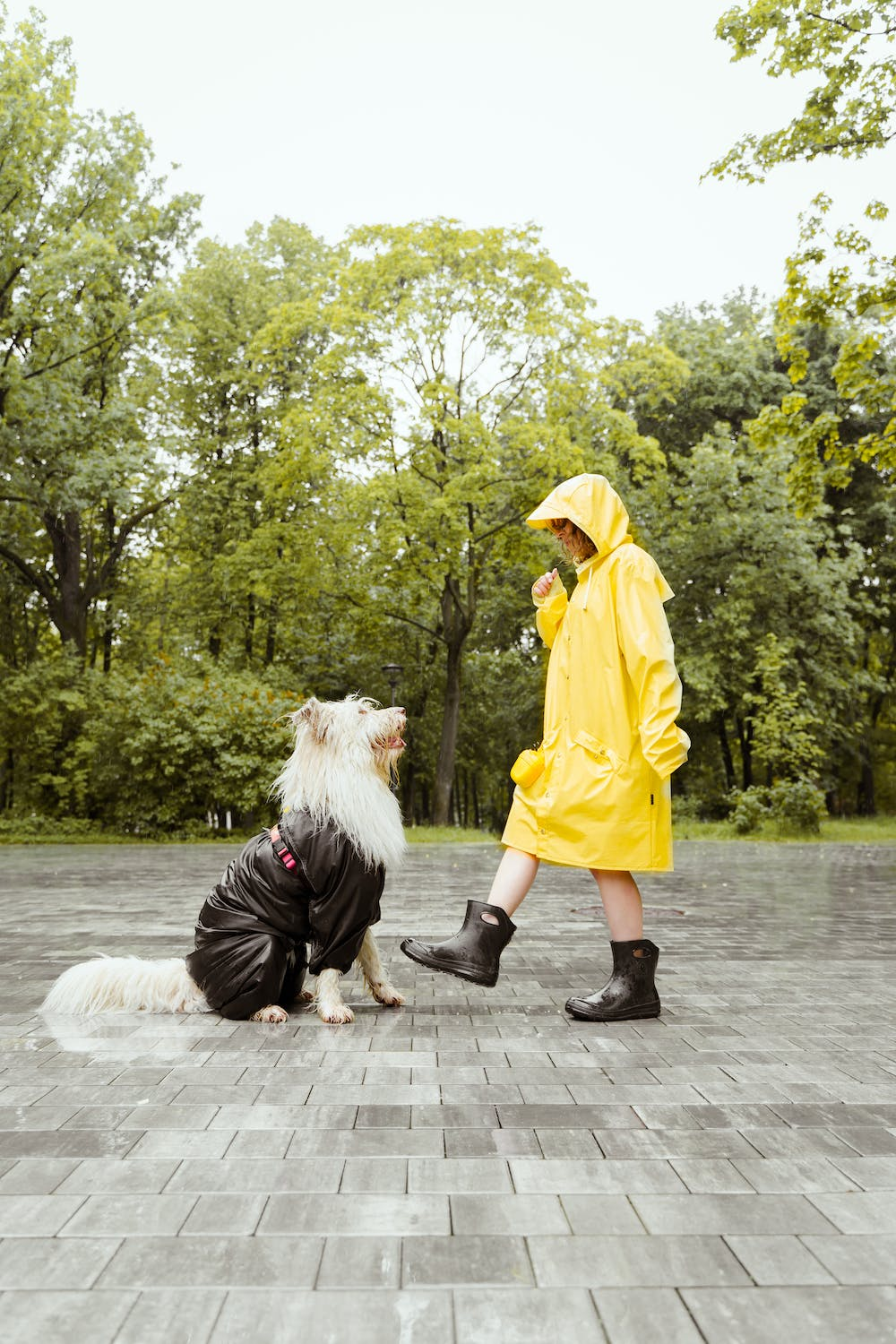
Mastering the Art of House Training Your New Puppy
Adopting a new furry friend is an exciting and heartwarming experience. However, as new pet owners, it can be challenging to get your dog to follow the rules of the household, especially when it comes to house training.
The good news is that it’s not impossible, and with consistency and patience, you can easily teach your pup to be house trained in no time! Here’s everything you need to know about how to potty train your dog.
Create a Schedule
The first step in potty training your dog is to establish a regular schedule for eating, sleeping, and going on walks. This schedule will help you keep track of when your dog is most likely to need to go potty.
Take your dog outside first thing in the morning, after meals, and before bedtime. Also, pay attention to your dog’s behavior, and if you notice them sniffing around or circling, that’s a sign they need to go outside.
Use Positive Reinforcement Training
When your dog successfully goes on a potty break, make sure you reward them with praise and a treat. Positive reinforcement is critical to house training your dog, and it will help them understand what you expect from them.
Avoid punishing your dog when they have accidents inside the house. Instead, use positive reinforcement to encourage good behavior and redirect them outside when they start to go potty inside.
Crate Training
Crate training is an essential part of house training your dog. Dogs naturally avoid going potty in their designated sleeping area, and crate training can help reinforce this behavior.
When you’re not supervising your dog, keep them in a crate, and let them out to go potty every few hours. As your dog becomes more comfortable with the crate, you can gradually increase the time they spend in there.
Monitor Your Dog’s Diet
What your dog eats can have a significant impact on their potty habits. Avoid feeding your dog table scraps or human food, and stick to a regular feeding schedule.
Also, make sure your dog has access to plenty of water throughout the day. Restricting water can lead to dehydration and other health problems.
Be Patient and Consistent
The key to potty training your dog successfully is to be patient and consistent. Some dogs pick up on house training quickly, while others may need more time to understand what’s expected of them.
Don’t get discouraged if there are setbacks along the way. Stay consistent with your schedule, use positive reinforcement, and keep an eye on your dog’s behavior.
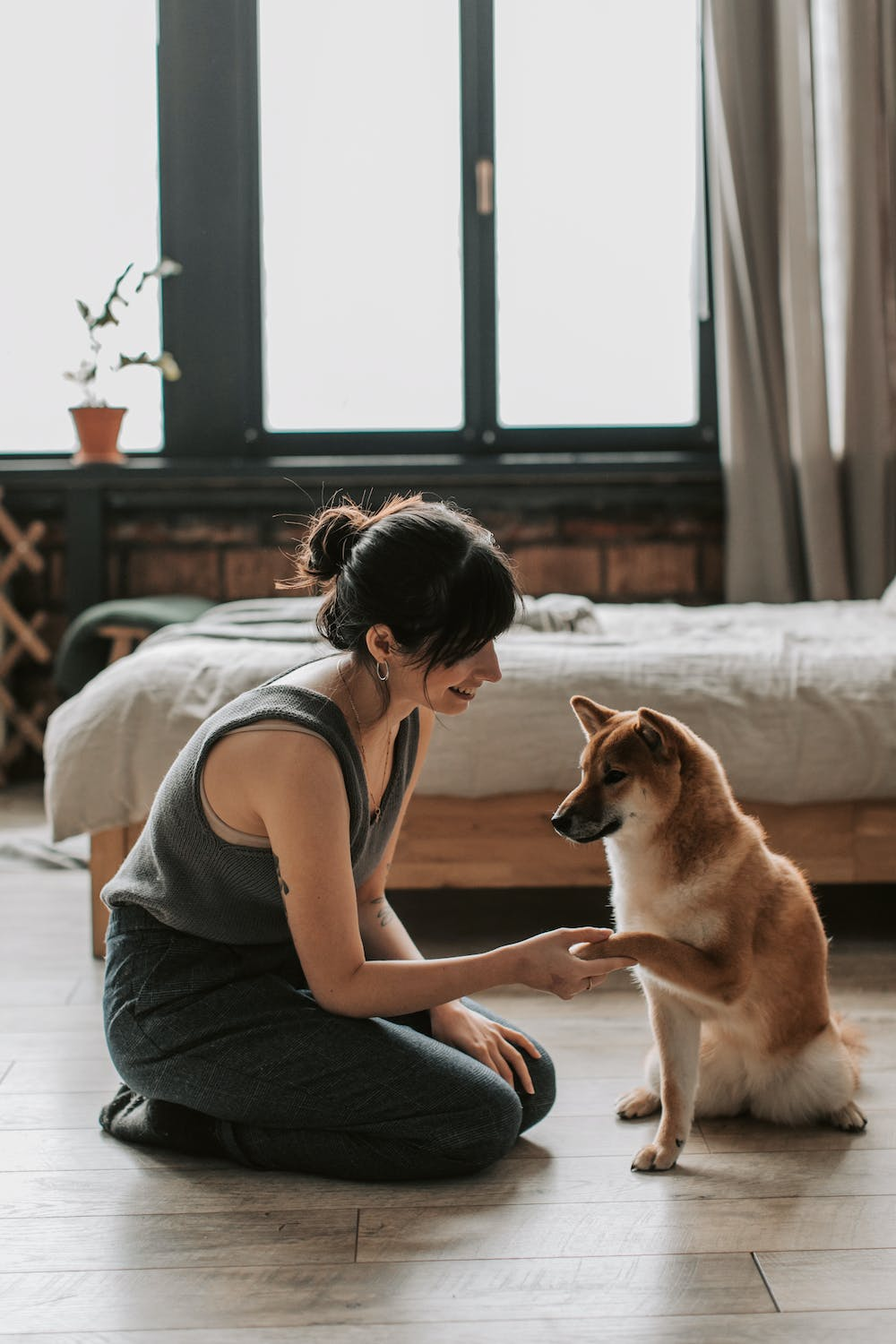
Effective Verbal Commands to Teach Your Pup
Training your furry companion is a vital part of being a responsible dog owner. It not only helps prevent behavioral issues but also strengthens your bond with your dog.
While physical cues are essential, verbal commands are equally valuable. Verbal commands, if taught correctly, can help your pup understand what you expect from them.
Sit and Stay
The “sit” command is one of the most common commands to teach a dog. Once your pup understands the sit command, you can then proceed to teach the “stay” command. The combination of these commands will help you have better control over your dog.
Start by standing in front of your pup, say “sit,” and gently press down on the hindquarters. Once your pup is in the sitting position, say “stay” in a firm yet gentle tone, take a few steps back, and then return to reward your pup immediately.
Come
The “come” command is another valuable command to teach your pup, particularly in situations where your dog may run off or get lost.
Start teaching your pup this command by calling their name followed by the command ‘come’ in a happy tone. Once they come to you, reward them with a treat or praise to reinforce positive behavior.
Off
Dogs have a natural tendency to jump up on people, especially when they are excited. This behavior can be a bit unpleasant for people, particularly if your dog is large. The “off” command can help you address this behavior.
If your dog jumps on you, you can say “off” in a firm voice and turn your back on your dog. Once your dog stops jumping, reward them with a treat or praise.
Leave it
The “leave it” command comes in handy when your pup is about to pick something up that they shouldn’t. It can be a small piece of food or something potentially dangerous. It’s essential to teach this command as it can save your dog’s life.
Start teaching this command by placing a treat on the ground and covering it with your hand. Say “leave it” and praise your dog when they don’t attempt to get the treat. Gradually increase the level of difficulty by placing the treat in the open before eventually moving onto other items.
Quiet
A dog barks for a variety of reasons. Sometimes it can be a means of communication, while other times, it can cause issues, particularly in apartment complexes. Teaching your dog the “quiet” command can help them understand when barking is inappropriate.
When your pup starts barking, say “quiet” in a firm voice, and reward them once they stop barking. This verbal command is a great way to stop excessive barking!

Common Behavioural Issues Your Puppy May Have and Why
Bringing a new puppy into your home can bring joy and excitement, but it can also come with some challenges. As cute as they may be, puppies are full of energy and curiosity, and they can often display some unwanted behavior.
Understanding common behavior issues and why they happen can help you address them properly and ensure a happy and healthy relationship with your furry friend.
Biting or Nipping
It’s natural for puppies to use their mouths to explore and play, but sometimes they can become too rough and end up biting or nipping their owners or other people. This behavior can be a result of teething or they may be seeking attention. Puppies may also bite or nip out of fear, anxiety or aggression.
To address this issue, start by providing plenty of chew toys and redirecting their attention to them when they bite or nip. You may also want to try ignoring them when they display this behavior, which will teach them that nipping does not get them the attention they seek.
Always reward your puppy when they interact appropriately with people, and consider seeking professional help if your puppy’s behavior seems overly aggressive or fearful.
Excessive Barking
Puppies communicate through barking, but excessive barking can cause disturbance and annoyance to those around them. Some puppies bark out of fear or anxiety, while others may bark to get attention or out of boredom.
To address excessive barking, it’s important to first identify the cause. Once you’ve determined the root cause, try to provide appropriate outlets for your puppy’s energy, such as exercise or playtime, and avoid rewarding your puppy when they bark for attention.
You may also want to consider crate training to teach your puppy to relax and stay quiet when left alone.
House Soiling
One of the most common behavior issues in puppies is house soiling, which can be a result of a variety of reasons such as lack of house training, fear, stress, or medical conditions.
To address this issue, it’s important to create a consistent and positive house training routine, which includes frequent potty breaks and plenty of positive reinforcement.
Avoid scolding or punishing your puppy for accidents but instead use positive reinforcement to encourage appropriate behavior. If the issue persists, it’s important to rule out any medical issues, such as a urinary tract infection or gastrointestinal problems.
Separation Anxiety
Puppies are social animals and often develop close bonds with their owners, which can lead to separation anxiety when they are left alone. This can manifest in various ways, such as destructive behavior, excessive barking, or house soiling.
To address separation anxiety, try to gradually desensitize your puppy to being alone by leaving them alone for short periods of time and gradually increasing the duration.
Provide them with plenty of toys, comfortable bedding, and try playing calming music when you’re not at home. You may also want to consult with a professional trainer or behaviorist for more specialized guidance.
Jumping
Puppies are naturally curious and energetic, but their jumping behavior can be unpleasant and even dangerous, especially for children or the elderly.
To address this issue, it’s important to teach your puppy alternative ways to greet people, such as sitting or offering their paw.
Avoid rewarding or encouraging jumping behavior, and consistently reinforce appropriate behavior by providing plenty of praise and rewards.
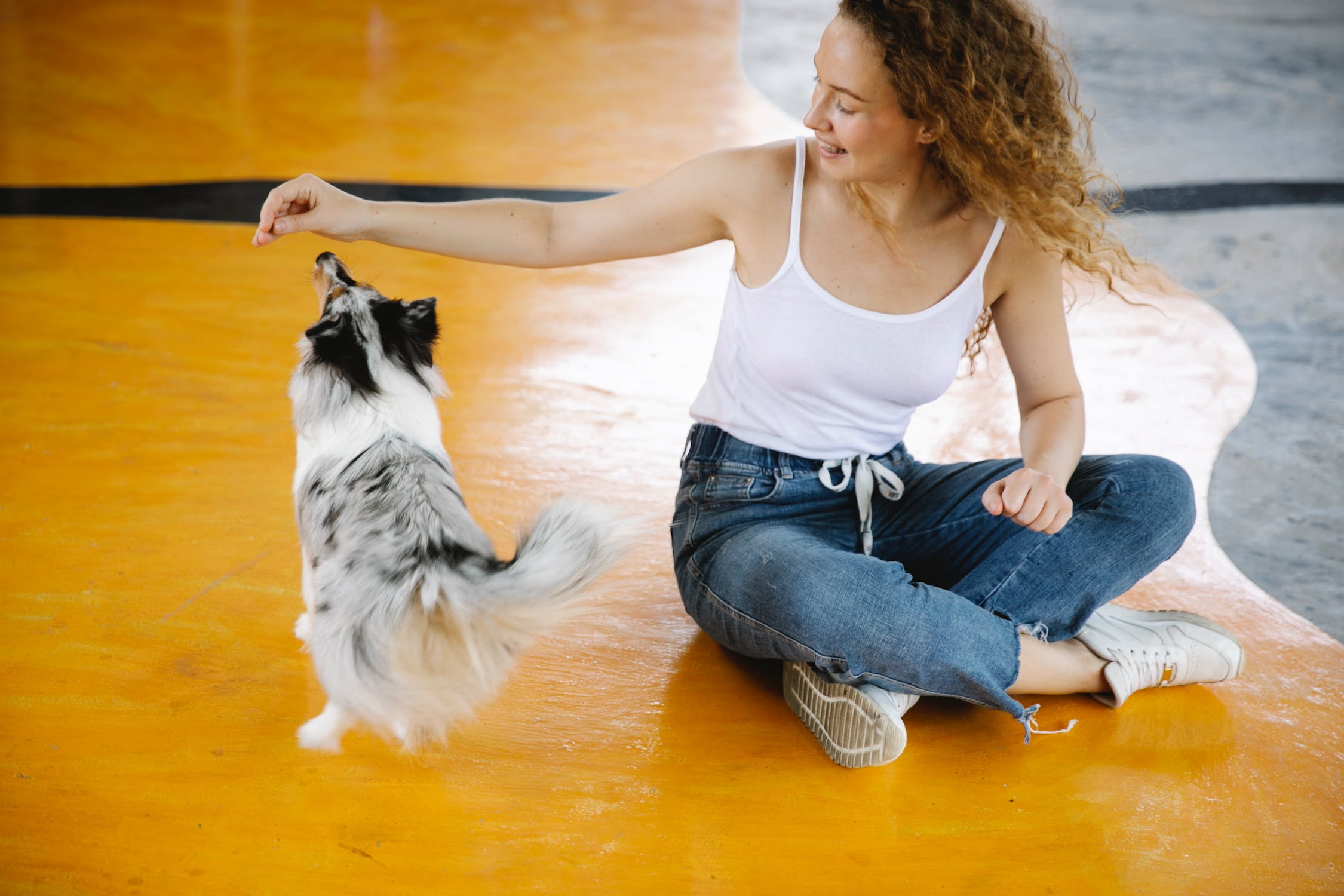
Seek Professional Help if Necessary
Not all dogs respond to training techniques in the same way. Some dogs may have unique personalities, behavior issues, or medical problems that require specialized training. If you are having difficulty training your dog, or if you have a specific behavior problem, it might be time to seek the help of a qualified professional dog trainer.
A professional trainers can work with you and your dog to address specific training needs and tailor a program that is best suited for your dog’s individual needs.
If you’re in the DMV area, reach out to us at Ruff House Dog Training to get started. We’ve been training dogs for over 10 years. We’ll walk you through the training process and find the best method to train your pup! Reach out today!
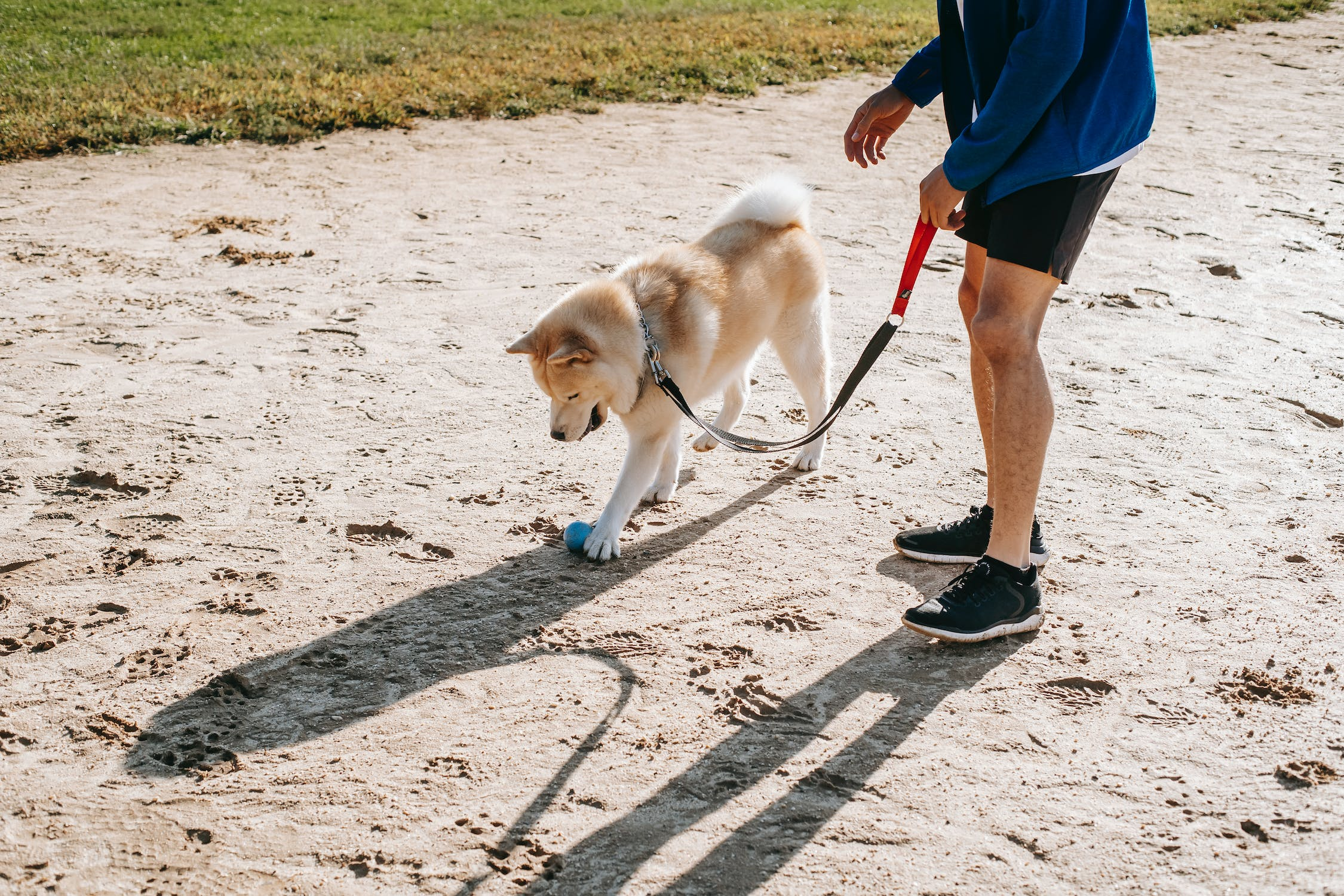
Conclusion
Training your dog is an essential part of owning a pet. Your dog is a member of your family, and you want to have a happy and harmonious relationship with them.
By following these essential dog training tips, you can create a well-behaved pup that will make your life easier and more enjoyable.
Remember to be patient, consistent, and seek professional help if necessary. With time and effort, you can train your dog to be the best companion you could ask for.











